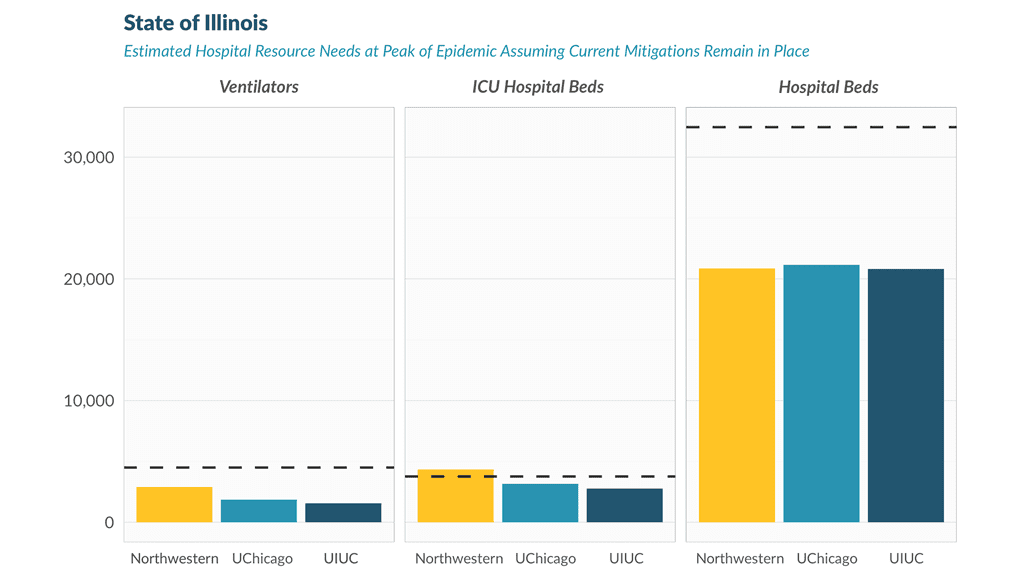Illinois released new state models from researchers at some of Illinois’ top educational institutions on Monday, which predict plateauing peak expanding from mid-May into mid-June in Illinois.
“That time frame of plateauing near a peak has been expanded from mid-May into mid June,” Prtizer said Monday. “In many ways, this news is disheartening.”
The state’s modeling efforts utilized data from daily death totals and hospital capacities to make the latest predictions. Researchers from the University of Illinois at Urbana-Champaign, Northwestern School of Medicine, the University of Chicago, the Chicago and Illinois Departments of Public Health (IDPH) contributed towards the results while utilizing real-time data.
STATEWIDE MODEL
A later and lower peak is a positive indicator of flattening the curve and a result of a slowdown of the state’s rate of transmission, which leads to a slower rate of increase over a longer period. Under current mitigations, hospital bed and ventilator capacity remains sufficient to treat COVID-19 patients. In other words, Illinois will reach the peak without overloading the state’s health care system as seen in other parts of the world.

The models lend credence to the stay-at-home orders, showing a later and lower peak as part of the state’s effort to flatten the curve and slow statewide transmission rates over a longer period of time.
REGIONAL METRICS
All four of the regions are meeting many of the key metrics, with three of the four on pace to meet all of the Restore Illinois reopening metrics to move forward after the 28-day period: North-Central, Central and Southern.
As of midnight, May 8, the Northeast region’s positivity rate is at 22.3 percent, higher than the 20 percent cap on this metric to move into the next phase. The North-Central region is at 9.1 percent, the Central region at 6.0 percent, and the Southern region at 10.5 percent.
All of the regions have seen a dip in hospitalizations since May 1st: 18.6 percent decrease in the Northeast region, 35.8 percent decrease in the North-Central region, 44.4 percent decrease in the Central region, and 54.3 percent decrease in the Southern region.
A requirement to move forward to next phase is that a region sees no overall increase, rather stability or a decrease, in hospital admissions for COVID-like illness across a 28-day period.
As of midnight May 8, all four regions met the third requirement of available surge capacity of at least 14 percent for ICU beds, medical/surgical beds, and ventilators.
| Region | Med/Surge Bed Availability | ICU Bed Availability | Ventilator Availability |
| Northeast | 17.8% | 18.8% | 64.3% |
| North-Central | 41.1% | 40.6% | 64.9% |
| Central | 52.4% | 44.2% | 74.6% |
| Southern | 45.8% | 28% | 80.7% |



